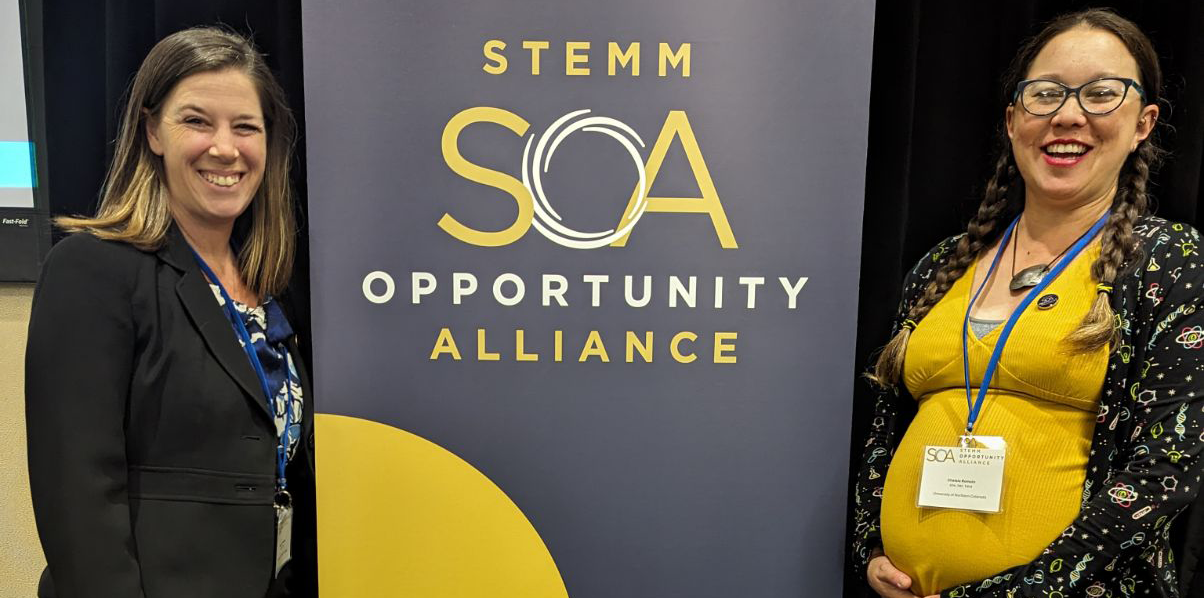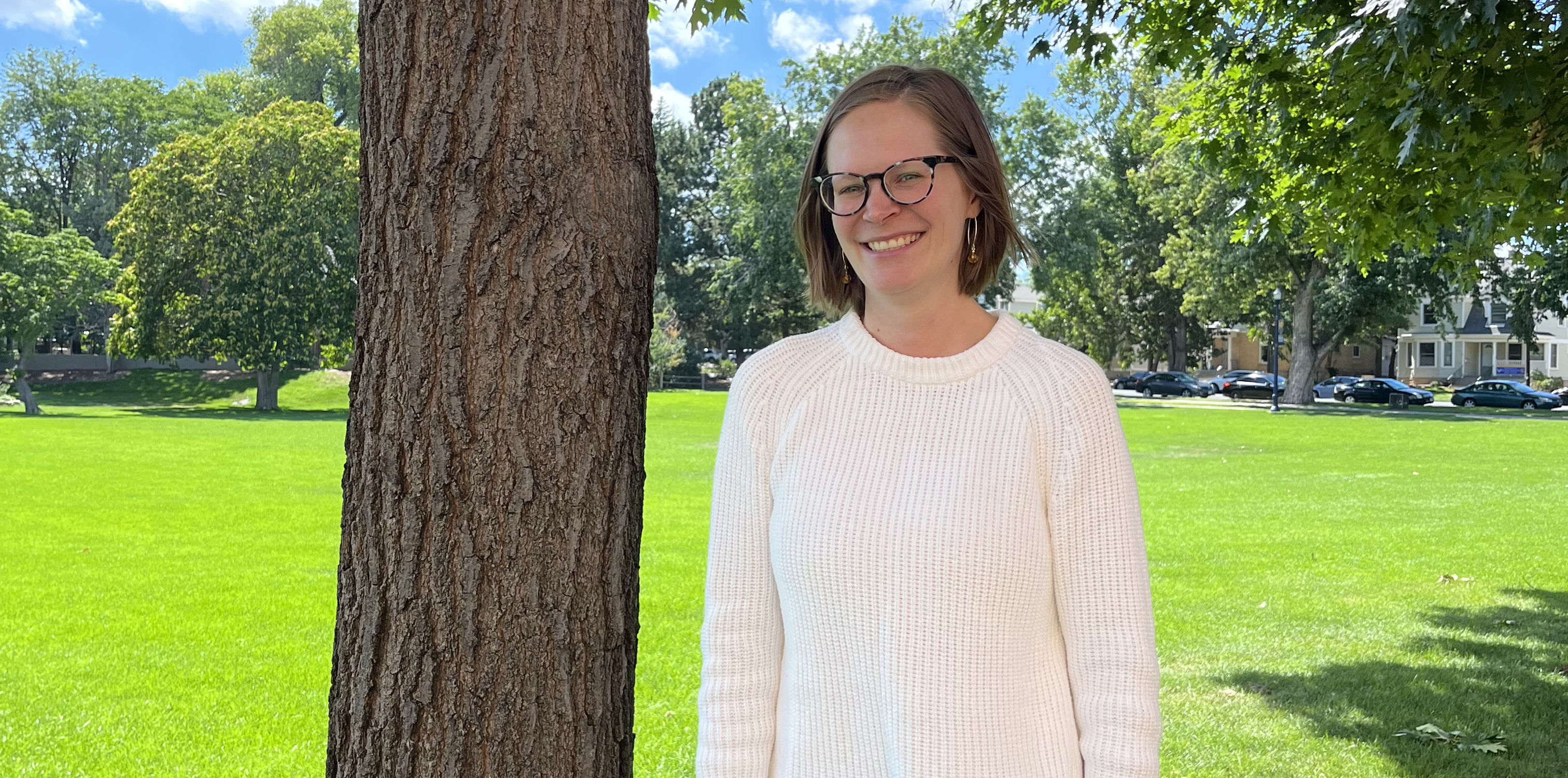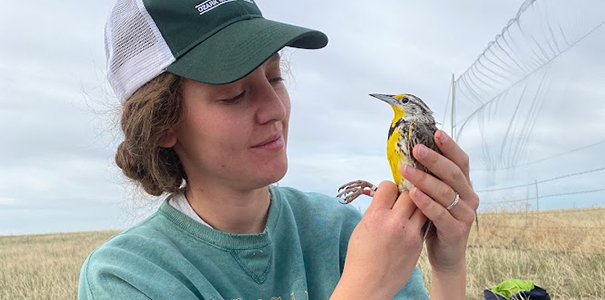
At the end of April, Geography, GIS and Sustainability Professor Chelsie Romulo, Ph.D., received an email that completely caught her off guard. The email was an invitation to a top-tier educational and professional experience at none other than the White House.
“I thought it was spam,” laughed Romulo. “Then I Googled the event, and it looked like a real thing, so I immediately reached out to my team to see who could join me.”
The invitation was to the 2024 White House Summit on STEMM Equity and Excellence: Propelling Progress and Prosperity by 2050. The White House Office of Science and Technology and Policy and the STEMM Opportunity Alliance co-hosted the event to bring together leaders across multiple industries to discuss ways to increase diversity, equity and access to careers in STEMM (Science, Technology, Engineering, Mathematics and Medicine).
The invitation offered space for two people to attend, Romulo and another colleague. Professor and Gender Studies Chair Harmony Newman, Ph.D., happily jumped on the opportunity to accompany Romulo.
“It was so unexpected and surprising. It felt surreal,” Newman said.
The pair was eager to share their expertise and knowledge on STEMM equity and to discuss ways minority communities could pursue STEMM careers at the nation’s top leader’s house and quickly arranged flights and hotels to the one-day event.
“The first half of the day we listened to guest speakers who work in government, academia, private sector and non-profits who all had these amazing stories related to equity in STEMM or overcoming really stressful situations related to their identities to become a leader,” said Romulo.
Later that afternoon, attendees broke out in different sessions, and Romulo and Newman chose to attend a session related to higher education.
“The hosts discussed nurturing curiosity in every child and creating opportunity for all in higher education, which are lofty goals and so the next step is to see how this could be done,” Romulo said.
In 2022, the White House Office of Science and Technology and Policy and other partners launched the STEMM Opportunity Alliance comprising more than 200 organizations committed to aiding efforts to bolster equity in STEMM fields. According to the director, the organizations have invested more than $2 billion toward these efforts.
The strategy for this initiative is based on five pillars: engagement, inspiration, discovery, innovation and opportunity.
“So, for us in higher education we’re now tasked with finding ways to implement these pillars,” Romulo said. “Where Harmony and I come in as scholars who research STEMM equity specifically in higher education, we need to figure out how we leverage our findings and our expertise so that we can make sure there is opportunity for all.”
Lack of Minority Communities in STEMM
According to the National Center for Science and Engineering Statistics, in 2021, women made up only one third (35%) of people employed in STEM occupations. Hispanic workers represented 15% of the total STEM workforce and Asian and Black workers were 10% and 9%, respectively.
Romulo saw gender gaps when she was in school. She received her bachelor’s degree in biology and then studied natural resource management for graduate school in environmental science and policy.
“I had experiences where my entire committee was all white men because there were no women or people of color available in the department who had a position or expertise where they could be on my committee,” Romulo said. “So, it’s very interesting coming into a field where I held a marginalized identity.”
Now in an educator role, Romulo can focus on research supporting STEMM equity and contribute to policy and practice to close equity gaps for people who have historically been excluded, underserved and underrepresented in STEMM disciplines.
Putting Thought into Action
Both Romulo and Newman have led externally funded grant projects that investigate STEMM equity. Currently, they are leading new grant proposals under review by the National Science Foundation (NSF), one for $1.2 million and another for $4.2 million. Both projects aim to create real boots-on-the-ground change and experience in higher education and STEMM opportunities.
For the $1.2 million project, Romulo and her colleagues put together a framework to support recent postdoctoral researchers to facilitate their professional development in career-building skills with a focus on improving equity in STEMM.
Over the course of three years, the proposed grant would give postdoctoral scholars the opportunity to come to UNC, learn under the new training and do some investigation about STEMM equity at a regional public Hispanic Serving Institution. By supporting participants who have navigated these inequities, the institute would both train the researchers in how to implement equity work and research while also practicing that equity work itself.
“The NSF is interested in supporting folks who want to get involved in scholarship related to STEMM education and equity specifically,” Romulo said. “We have a history of inclusive excellence and equity work in STEMM education at UNC. So, we took some of the things that we know and developed it into postdoctoral training.”
The $4.2 million grant involves multiple universities in addition to UNC, including the University of New Hampshire, Oregon State University, Clemson University and University of Colorado, Boulder.
“With this representation across the country and with this collaborative opportunity with these other scholars, we want to look at racism and conservation science,” Newman said.
Newman says the plan is to collect data on the kinds of barriers and opportunities connected to one’s race and gender for advancement at the undergraduate level, within graduate education and within the professional sphere of conservation.
“So, once you’ve graduated and you’re working, whether it’s in academia or outside, [we want to know] what kind of barriers and opportunities you are experiencing, connected to advancing and your race and gender,” Newman said. “One of the places we decided to leverage is partnerships with DEI committees that already exist within conservation.”
The goal, Newman says, is to uncover how successful organizations are in providing positive gender and race experiences and to communicate that information and strategies to other companies and organizations.
“The framework, the lens that we’re using in this examination is about belonging, but not at the individual level where it’s about the identities of feeling like ‘I belong,’ but instead structural belonging,” Newman said.
Structural belonging, Newman says, looks at the policies, practices and cultural norms that demonstrate that one is accepted, supported, respected, valued by and important to a community. In this case, the project will look at strategies to create structural belonging for conservation scientists based on race and gender.
Both research projects are awaiting approval and funding, similar to the STEMM Opportunity Alliance efforts that Newman and Romulo engaged with at the summit last month. While the goal is to put actions into place, Newman says she is happy that the conversations surrounding inequity in STEMM fields are taking place.
“There is all this money, all these resources and opportunities that exist from networking and drawing on each other to come up with solutions,” Newman said. “I mean, the White House is holding summits and trying to address the inequities, so that’s exciting!”
More Stories
-
Audiology Student Researches Security Vulnerabilities in Hearing Aids
Este artículo no está en español.
-
Inspiring Others Through Science: New Audiologist and Cognitive Neuroscientist Plans to Make Big Impact
Este artículo no está en español.
-
Alumna Receives NSF Graduate Fellowship for Avian Conservation Research
Este artículo no está en español.
-
New Certificate Programs Support Increasing Demand for GIS and Drone Technologies
Este artículo no está en español.





